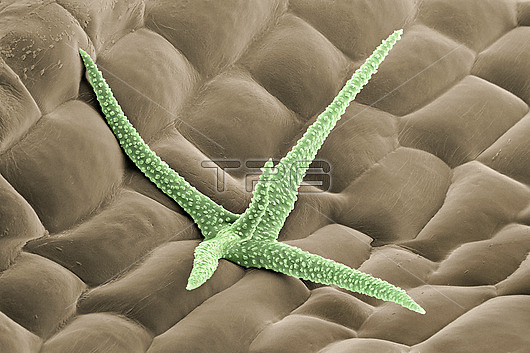
Scanning electron micrograph of the inside surface of an air canal of the water lily, Nymphaea alba. The picture shows (green) a sclereid - a hardened branched hair; 1mm tip to tip - covered with small crystals of calcium oxalate. Water lilies can grow in water that is up to 2m deep. The underwater stem, the rhizome, is submerged in anoxic mud, but needs oxygen to remain alive. Oxygen is produced by photosynthesis in the floating leaves, which connect to the rhizome by long stalks, called petioles. The petioles contain open cellular tunnels, the air canals. Oxygen flows through these down to the rhizome. Unfortunately, the air canals could also function as an easy route to the rhizome for any pest species that gained entry via the floating leaf blade. To defend itself, the plant has evolved hard spines - seen here, and coated with a poison - on the inner surfaces of all the canals
| px | px | dpi | = | cm | x | cm | = | MB |
Details
Creative#:
TOP26709387
Source:
達志影像
Authorization Type:
RM
Release Information:
須由TPG 完整授權
Model Release:
N/A
Property Release:
N/A
Right to Privacy:
No
Same folder images:

 Loading
Loading